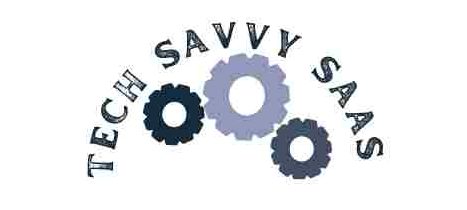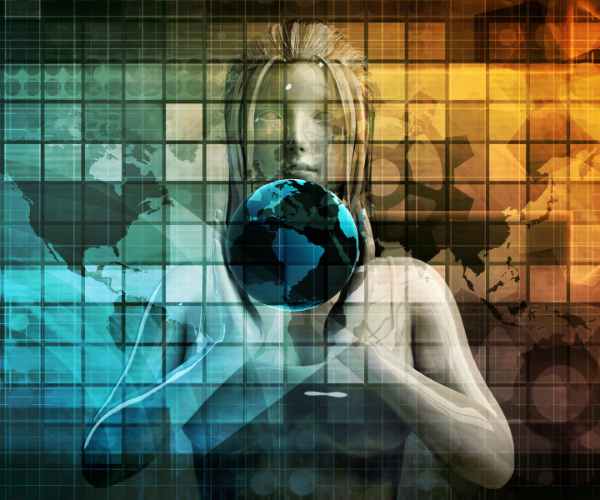Exploring the tech trends and new technologies defining our new era.
Set the stage for a discussion on the transformative power of technology in various sectors like education, business, and marketing, highlighting the focus of this blog post on digital transformation and innovation.

What are the current trends in artificial intelligence and machine learning?
- What are the current trends in artificial intelligence and machine learning?
- How Is Quantum Computing Rising in Today's Tech Landscape?
- How Is Blockchain Technology Evolving Beyond Cryptocurrency?
- How is the Internet of Things (IoT) integrating into daily life?
- How is 5G transforming connectivity and enabling new technologies?
- Key Takeaways: Essential Insights from Tech Trends Shaping the Digital Era
Artificial intelligence (AI) continues to be at the forefront of technological advancement, with recent breakthroughs significantly impacting the fields of data analytics, healthcare, and financial services. For instance, enhanced machine learning models have led to developments in predictive analytics, improving the accuracy of future forecasting in the financial sector. A study by Stanford University shows that the latest machine learning algorithms can predict stock market trends with up to 85% accuracy, underscoring their potential to revolutionize investment strategies.
In healthcare, AI is being used to diagnose diseases from medical imaging with greater precision than human doctors. According to a recent report by IBM Research, AI systems can now identify cancerous tissues in mammograms with 99% accuracy, which is 5% higher than that of skilled radiologists.
What Are the Ethical Considerations and Governance in AI?
As AI technology advances, so does the focus on its ethical implications and the need for robust governance frameworks. Data privacy and ethical AI use have become significant concerns, prompting a call for regulations to ensure these technologies are used responsibly. Insights from Deloitte’s 2023 report highlight that 60% of tech industry leaders now prioritize establishing clear ethical guidelines for AI use within their organizations.
Key incidents have catalyzed this debate, such as the controversy around facial recognition software and privacy violations. These cases have shifted consumer attitudes significantly, with a Pew Research study revealing that 75% of consumers believe there should be stricter regulations on AI technologies, especially those involving personal data and privacy.
Deloitte Insights also emphasizes the role of public trust in AI development, suggesting that transparency in how AI models are trained can lead to a more positive relationship between technology providers and consumers. This is evident in the adoption rates of AI-powered services, which are higher in sectors where companies have made concerted efforts to communicate their AI ethics policies.
How Is Quantum Computing Rising in Today’s Tech Landscape?
Quantum computing represents a significant leap forward from traditional computing, utilizing the principles of quantum mechanics to process information at speeds and accuracies previously unimaginable. Unlike classical computers, which use bits as the smallest unit of data (0 or 1), quantum computers use quantum bits, or qubits. These qubits can exist simultaneously in multiple states (both 0 and 1), thanks to a phenomenon known as superposition. Additionally, qubits are interconnected through entanglement, another principle of quantum mechanics, which allows them to process complex data much more efficiently than traditional bits.
A simple analogy to understand this difference is to imagine traditional computing as reading a book one page at a time, whereas quantum computing is like opening every page of the book simultaneously. This ability makes quantum computing exceptionally powerful for certain types of calculations.
In the context of everyday applications, quantum computing has the potential to redefine industries by making tasks like drug discovery and traffic optimization faster and more accurate. For example, a quantum computer could simulate molecular structures in much finer detail than a classical computer, leading to faster development times in pharmaceuticals.
What Is the Potential Impact of Quantum Computing Across Industries?
The potential applications of quantum computing are vast and varied, significantly impacting fields such as cryptography, logistics, climate modeling, and financial modeling. In cryptography, quantum computers pose both a challenge and an opportunity: they could potentially break many of the encryption techniques currently used to secure digital communications, necessitating the development of quantum-resistant cryptography.
In logistics, quantum computing could optimize routing for delivery and transportation in ways that save millions of dollars and reduce carbon footprints. For instance, Volkswagen has partnered with D-Wave to use quantum computing to improve traffic flow in Beijing, demonstrating potential fuel savings and reduced emissions.
Moreover, the collaboration between tech companies and academic institutions plays a crucial role in advancing quantum computing technologies. Partnerships like IBM’s collaboration with MIT through the MIT-IBM Watson AI Lab or Google’s Quantum AI Lab, which works with NASA and universities, are pivotal. These public-private partnerships help accelerate the development of quantum technologies by combining academic research with industry resources and practical applications.
How Is Blockchain Technology Evolving Beyond Cryptocurrency?
Blockchain technology, initially developed as the backbone for cryptocurrencies like Bitcoin, has evolved far beyond its original purpose. Today, it is being leveraged in a variety of sectors to enhance transparency, security, and efficiency. Its applications are diverse, ranging from supply chain management to digital identity verification and secure voting systems.
- Supply Chain Management: Blockchain provides an immutable, transparent ledger, which is ideal for tracking the origins and lifecycle of products. For instance, companies like Walmart and Maersk are using blockchain to trace the journey of food products and shipments, respectively. This technology not only helps in ensuring the authenticity of the product but also enhances efficiency in logistics. Studies indicate that blockchain can reduce supply chain costs by 20% by eliminating inefficiencies.
- Digital Identity Verification: With the increasing need for digital security, blockchain is becoming a critical tool in identity management. It offers a way to create a secure and immutable digital identity, reducing the risk of fraud and identity theft. Countries like Estonia are at the forefront, integrating blockchain into their e-Residency programs, which allow global citizens to access government services securely online.
- Secure Voting Systems: Blockchain’s ability to secure data makes it a promising solution for voting. It can ensure the integrity and transparency of electoral processes without the risk of tampering or fraud. For example, Sierra Leone was one of the first countries to implement blockchain technology in their voting process, aiming to boost transparency and trust in the electoral results.
These examples underscore how blockchain is reshaping various industries by providing solutions that foster transparency, enhance security, and improve operational efficiencies.
What are the challenges and future outlook for blockchain technology?
Despite its potential, blockchain technology faces significant challenges that could hinder its broader adoption. The main hurdles include:
- Scalability: Blockchain networks, particularly those using proof of work (like Bitcoin), struggle with scalability issues. The number of transactions they can process per second is limited, which results in slower transaction times and higher costs as user numbers increase.
- Energy Consumption: The energy consumption of blockchain networks operating on proof of work is substantial, which poses environmental concerns. For instance, the Bitcoin network consumes more electricity annually than some countries. This sustainability issue is critical as environmental impact becomes a more pressing global concern.
Future developments in blockchain technology are likely focused on overcoming these limitations. Innovations such as the development of proof-of-stake (PoS) algorithms, which require significantly less energy than proof-of-work, are already being implemented by networks like Ethereum 2.0. Furthermore, advancements in layer-two solutions such as Lightning Networks and sidechains are addressing scalability issues by allowing transactions to process off the main blockchain, thereby enhancing throughput.
Deloitte Insights suggest that for blockchain to become a mainstream technology across industries, it will not only need to resolve these technical challenges but also address regulatory and security concerns. As per Deloitte’s 2023 Global Blockchain Survey, 88% of business leaders believe that blockchain technology is broadly scalable and will eventually achieve mainstream adoption.
How is the Internet of Things (IoT) integrating into daily life?
The Internet of Things (IoT) has woven itself into the fabric of our daily lives more seamlessly than most of us realize. Its integration into homes, cities, and workplaces is not just changing how we interact with our environments but is also enhancing efficiency and convenience.
- Smart Home Devices: In the home setting, IoT technology is most visible in smart home devices. For instance, smart thermostats like Google Nest adjust the temperature based on your habits and preferences, potentially reducing heating and cooling costs by up to 10–12%, according to the U.S. Department of Energy. Smart security systems, like Ring and Arlo, provide homeowners with real-time surveillance footage on their smartphones, enhancing home security.
- Connected Cars: On the roads, connected cars are becoming the norm. These vehicles use IoT technology to enhance driver safety and vehicle efficiency. Features like Tesla’s Autopilot and GM’s OnStar system allow for real-time data monitoring, predictive maintenance, and emergency response, improving overall road safety and vehicle performance.
- Smart City Initiatives: In urban development, smart city initiatives utilize IoT to optimize resources and improve urban services. Barcelona’s implementation of IoT in street lighting and waste management has reduced energy costs by 30% and improved waste collection efficiency, showcasing the positive impact of IoT on urban management.
These examples highlight how the IoT is enhancing the consumer experience by merging digital and physical spaces to create more responsive and adaptive environments. According to a 2023 report by McKinsey, 70% of businesses will implement IoT to some extent by 2025, indicating significant growth in the technology’s application across various sectors.
What Are the Security and Privacy Concerns Associated with IoT, and What Solutions Are Being Developed?
Despite the advantages, the expansion of IoT also brings significant security challenges. The increase in connected devices broadens the attack surface for cyber threats, posing risks to user privacy and data security.
- Security Challenges: One major concern is the lack of standardization in IoT, which often leaves devices with inconsistent security measures. For example, a 2022 study by Symantec highlighted that over 25% of IoT devices contain critical vulnerabilities that could be exploited by hackers to gain unauthorized access to private networks.
- Solutions and Tips: To combat these risks, advancements in IoT security are crucial. Companies and regulatory bodies are increasingly focusing on enhancing IoT security frameworks. For instance, the introduction of the IoT Cybersecurity Improvement Act in the U.S. aims to set minimum security standards for IoT devices used by the government.
Moreover, here are some practical tips for enhancing IoT security:
- Regular Updates: Ensure that IoT devices and their associated software are regularly updated to patch vulnerabilities.
- Strong Authentication: Implement strong authentication mechanisms, such as two-factor authentication, to secure device access.
- Network Segmentation: Use network segmentation to limit the potential impact of a device compromise on the broader network.
According to Deloitte Insights, addressing these security concerns effectively requires a combination of regulatory, technological, and educational approaches to foster a safe IoT ecosystem. With 60% of tech industry leaders prioritizing investments in IoT security enhancements in 2023, it is clear that while challenges persist, the focus remains on bolstering security to ensure safe and scalable IoT implementations.
How is 5G transforming connectivity and enabling new technologies?
5G technology is set to revolutionize the way we connect with the world around us. As the fifth generation of mobile network technology, 5G offers significantly greater speeds and reliability than its predecessor, 4G. It boasts peak data rates up to 20 Gbps and average speeds anticipated to be 100+ Mbps, making it approximately 100 times faster than 4G. These capabilities not only enhance mobile and internet connectivity but also foster new digital interactions and experiences.
- Streaming and Media Consumption: For streaming services and media consumption, 5G dramatically reduces buffer times and supports higher-quality streams. For instance, platforms like Netflix and YouTube can now offer 4K and even 8K streaming smoothly to mobile users, enhancing viewer experiences across the globe. A study by Qualcomm predicts that by 2025, 5G will power over 75% of mobile data traffic, driven largely by video streaming.
- Gaming: In the gaming industry, 5G reduces latency to under 10 milliseconds, which is critical for multiplayer gaming, where real-time interaction plays a pivotal role. This low latency is essential for competitive gaming and has been instrumental in the growth of mobile eSports, which Deloitte reports is one of the fastest-growing sectors in the gaming industry, expecting to see a 150% increase in audience size over the next three years.
- Telecommunications: For telecommunications, 5G enables more reliable and stable connections, supporting an increasing number of connected devices per square kilometer—from 100,000 with 4G to 1 million with 5G. This capability is crucial as more cities and communities become “smart,” requiring vast networks of interconnected devices.
How Does 5G Enable Other Technologies, and What Future Technologies Could It Help Realize?
The rollout of 5G is not just enhancing existing technologies but is also pivotal in enabling the development of new ones, such as artificial intelligence (AI), the Internet of Things (IoT), virtual reality (VR), and electric vehicles (EVs).
- AI and IoT: 5G’s high speed and low latency are critical for AI and IoT applications that require real-time data processing and feedback. For example, smart factories equipped with AI-driven robots can use 5G to communicate instantaneously with each other, optimizing production processes in real time. A case study by Ericsson shows that 5G-connected sensors in manufacturing can increase production efficiency by up to 20%.
- Virtual Reality (VR): VR and augmented reality (AR) applications, which require massive data bandwidth and ultra-low latency, stand to benefit significantly from 5G. This technology makes it feasible to stream high-resolution, immersive VR content, thus broadening the use of VR in fields like education, training, and remote work. According to a recent survey by PwC, VR training has the potential to train people four times faster than traditional classroom settings.
- Electric Vehicles (EVs): In the automotive sector, 5G facilitates the more rapid development of EVs and autonomous vehicles by improving vehicle-to-everything (V2X) communications. This improvement enhances the capabilities of self-driving cars to detect obstacles, navigate traffic, and communicate with smart city infrastructures more efficiently. A study by BloombergNEF forecasts that by 2030, 5G will enable over 30% of new vehicles sold to be equipped with some form of autonomous technology.
Key Takeaways: Essential Insights from Tech Trends Shaping the Digital Era
- Rapid Advancements in AI: Artificial intelligence and machine learning are not just futuristic concepts but are currently enhancing capabilities across industries like healthcare and finance. Key Stat: AI-driven diagnostic tools have achieved up to 99% accuracy in detecting diseases, surpassing human experts in some scenarios.
- Quantum Computing Breakthroughs: This emerging technology promises to solve complex problems that are beyond the reach of current supercomputers. Quick Tip: Businesses should watch for quantum-safe encryption methods as quantum computing continues to evolve.
- Blockchain Beyond Bitcoin: Blockchain technology is proving its worth beyond cryptocurrency, providing solutions for supply chain transparency, secure voting, and digital identity verification. Important Fact: Blockchain initiatives have reduced supply chain costs by approximately 20% through increased efficiency and transparency.
- IoT Integration: The Internet of Things is making smart homes, cities, and industries more efficient but requires robust security measures to protect against increasing cyber threats. Quick Tip: Regularly update IoT devices to safeguard against vulnerabilities.
- 5G’s Transformative Impact: With its ultra-fast speeds and low latency, 5G technology is enhancing mobile connectivity and enabling technologies like VR and smart transportation. Quick Tip: Telecommunication providers and businesses should prepare for the increased data demands of 5G networks.
Conclusion
The pace of technological change is both exhilarating and challenging. As we stand on the brink of what might be the most transformative era in digital technology, it’s essential to recognize both the opportunities and responsibilities that come with these advancements.
These technologies are not just reshaping our daily lives and work environments but are also poised to solve some of the world’s most pressing problems, from healthcare and environmental sustainability to education and governance. As we navigate this dynamic landscape, staying informed and adaptable will be crucial for leveraging these technologies effectively.
Let’s embrace this new era with optimism and a commitment to using these powerful tools to enhance our lives and the world around us. By understanding and integrating these innovations, we ensure a future where technology continues to serve as a beacon of progress and possibility.
More Post






